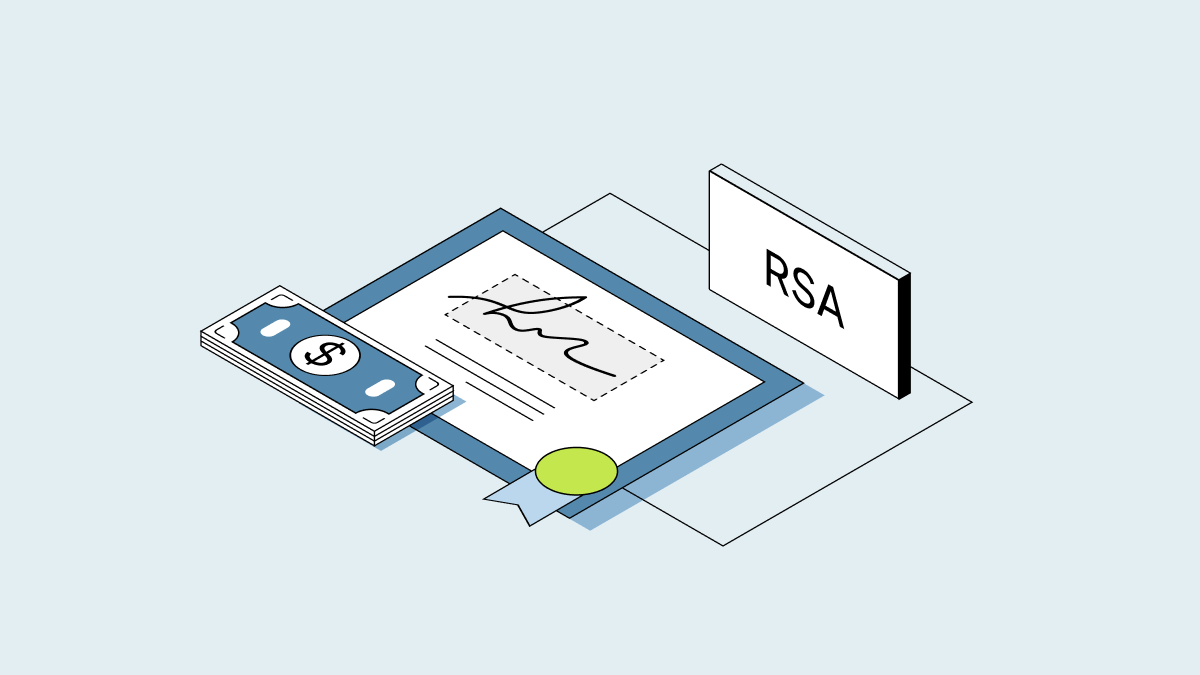When you leave a job and sign the exit paperwork, it’s time to make some big decisions about your equity. Your former company isn’t obligated to remind you what choices you have at the time of your departure—including how and when to exercise any vested stock options, how to sell equity on a secondary market, and how to plan for the potential tax implications.
If you’re leaving a private company, you probably can’t turn your equity into cash—at least not right away. But later, if your company has a liquidity event like an initial public offering (IPO) or acquisition, your equity could turn into real wealth. Here’s what you need to know about what happens to vested and unvested stock when you leave a company.
What type of equity do you have?
The type of equity compensation you have matters because each type can have different implications upon acquisition and upon sale of the underlying stock.
Restricted stock awards
Restricted stock awards (RSA) are usually granted and issued early in a startup’s life cycle because the purchase price is, at most, a small cost. If you have RSAs, you likely purchased your shares on the day they were granted. RSAs are usually subject to a vesting schedule, often with time-based or milestone vesting conditions (or both). Any unvested RSAs are usually repurchased by the company within a certain time post-departure, at a price and on the terms outlined in your equity grant agreement.
→ Learn more about the differences between RSAs and RSUs
Restricted stock units
A restricted stock unit (RSU) is a promise from your employer to give you shares of the company’s stock (or the cash equivalent) on a future date and when certain vesting conditions are met (for example, when you stay at the company for a certain amount of time and the company IPOs). If your vesting conditions have not been met on the date you depart the company, it’s possible that you won’t have any RSUs.
→ Learn more about the differences between RSUs and stock options
Single-trigger RSUs
If your company issues single trigger RSUs, then you’ll continue to hold whatever units have vested and settled into shares as of your departure date. What you can do with those resulting shares depends on whether the company is public (the shares may be freely tradeable on the market) or private (the shares are likely to not be tradeable until there’s an exit liquidity event).
Stock options
If you have incentive stock options (ISO) or non-qualified stock options (NSO), the situation looks a bit different than it does for RSAs or RSUs. ISOs and NSOs are types of employee stock options, which aren’t actual shares of stock—they’re the opportunity to purchase shares at a fixed price—the strike price. You’ll have to decide whether you want to exercise your stock options (purchase your shares) within the post-termination exercise window that your equity plan specifies. (More on that below.)
How to figure out what type of equity you have
To see what type of equity you have, check your equity paperwork or grant agreement. As a general matter, many early-stage U.S.-based companies offer RSAs to their founders, ISOs to their full-time employees, NSOs to their advisors and consultants. Then, as the company grows and increases in value, it will sometimes transition to issuing RSUs. RSUs can offer certain benefits over stock options for more mature companies, including less share dilution, zero exercise cost for employees, and less risk for the employee if the stock price or fair market value (FMV) decreases.
How much of your equity is vested?
Companies usually tie earning equity to tenure (a process called vesting). In most cases, you have to stay for at least a year to vest any equity (your grant may call this a “one-year cliff”). When you leave, you are only entitled to the portion of that equity that has vested as of the date of your departure.
Vesting schedule example
If, for example, your company grants you 4,000 ISOs that vest over a four-year period with a one-year cliff and you leave before your one-year anniversary, you won’t get any equity when you leave. If you stay for exactly two years, you’ll have 2,000 vested options. You don’t vest all 4,000 ISOs until you’ve worked at the company for four years. If you leave before then, you forfeit any unvested options.
|
Tenure at company at time of departure |
Vested options |
|
<1 year |
0 |
|
1 year |
1,000 |
|
2 years |
2,000 |
|
3 years |
3,000 |
|
4 years |
4,000 |
If you think your equity could be valuable, it may make sense to time your departure date according to your vesting schedule. Many companies switch to monthly vesting after you pass your one-year cliff, so if you started on January 1, 2023 and were planning on leaving on July 30, 2024, changing your last day to August 1, 2024 could help you vest another month’s worth of equity.
How many stock options have you exercised?
If you were granted stock options and have already exercised some or all of those vested options before your departure, you already own those shares—your company usually can’t claim or repurchase them when you leave. However, you may want to check your grant to be sure. For example, if your equity grant contains a clawback provision or language around “company repurchase rights,” “redemption,” or “forfeiture,” your company may have the option to forcibly buy back shares from you.
If you took advantage of an early-exercise policy and exercised options before they vested, your company has the option to repurchase any exercised-but-unvested shares when you leave.
How long do you have to exercise your remaining vested options?
You only have a certain amount of time to exercise your vested options after leaving a company.
This time period is called your post-termination exercise period (PTEP). Certain tax rules require ISOs to be exercised within 90 days of departure to maintain ISO tax status, so most companies apply the 90-day window to all option grants for consistency. If you don’t exercise within this window, you’ll forfeit your options.
The 90-day window
There are potentially significant tax implications based on your post-termination exercise timing. Your equity plan may give you a PTEP longer than 90 days or you may be able to negotiate a longer PTEP with your employer as part of your individual separation agreement when you depart.
Even if your company provides a longer PTEP, IRS regulations dictate that if you exercise ISOs more than 90 days after you leave the company, the options are treated as NSOs for tax purposes. Exercising NSOs requires you to pay the strike price for the options and pay the total tax liability at the time of the exercise. In contrast, for ISO exercises, the tax obligation is assessed as part of that year’s tax return—which can give you more time to come up with the cash to cover your tax liability.
You should be able to find the details of your PTEP in your grant or ask your company about their policy in relation to your specific equity grant. Look at this before you leave—don’t rely on your company to remind you of the deadline afterward. (Generally, departing employees of companies that use Carta to manage their equity will receive reminders before their window closes, but it’s always wise to check before you go.)
If you don’t think you’ll have the necessary cash to exercise your vested options in the allocated PTEP, ask the company for an extension as part of your separation agreement.
Additional tax implications to consider
If you exercise your options, you don’t just need enough money to purchase your shares—you also need to prepare for the tax implications. Before exercising ISOs, take advantage of an AMT calculator to see what your alternative minimum tax (AMT) bill might be.
→ Learn more about how taxes work when you exercise stock options
How to exercise equity when leaving a company
If you’re interested in exercising your stock options, start learning about the process required by your company ASAP. Unless your company uses a platform like Carta, you may have to write a paper check and get it to your company before your PTEP expiration date. Otherwise, you may miss your exercise window.
To figure out how much you’ll pay when exercising your option grant, multiply the number of vested options you want to purchase by your strike price (this is a fixed price for each of your shares that is spelled out in your option grant). For example, if you want to purchase 1,000 vested options and your strike price is $1.50, you’ll pay $1,500 for the shares.
How to turn equity into cash
For shareholders of public companies, liquidity is usually accessible by selling shares on the open market. However, if you exercise options in a private company, you may not get your money back for a while—if at all. In many instances, stockholders of private companies can’t liquidate their shares until an exit event (either a merger, acquisition or IPO).
You may, however, be able to sell your shares in an active private company for cash before an exit event in either of the following scenarios:
-
If your company runs a secondary liquidity event, such as a tender offer
-
If you can find a buyer on the secondary trading market
Tender offers
If your company holds a tender offer or other structured secondary liquidity event for stockholders, you may have the option to sell your shares on the terms, price, and other criteria negotiated by the company and the designated buyer(s). You don’t have to participate if you want to continue holding your shares.
Secondary market transactions
If a company-structured transaction isn’t an option, you may be able to sell your shares through a broker in a secondary transaction. However, some companies reserve the right to buy back employees’ shares before the employee can sell them in a secondary transaction with a third party. Companies will typically waive these right-of-first-refusal (ROFR) restrictions during a tender offer or similar event, but may not do so for employee-initiated opportunities. It’s important to review your equity documents and understand what restrictions might apply. Failure to comply may result in the company refusing to process your sale transaction.
What to do if you can’t afford to exercise your equity
Many employees end up walking away from unexercised options because it’s too expensive. If you believe your equity is worth pursuing but are low on cash, you may have some other options:
-
Net exercise: Some companies will allow you to give them a portion of your vested shares as payment for the rest of your shares (kind of like a cashless exercise during a tender offer).
-
Sign-on bonus: If you’re joining another company, try to negotiate a sign-on bonus that will help you purchase your shares at your prior employer.
-
Stock option lending: If your company allows it and if the terms are agreeable, a lender can offer you the money you need to purchase your options (and sometimes cover the tax bill). You can pay them back when your company has a liquidity event.
-
PTEP extension: If you don’t have the money now, but think you may have it later, you can request that the company extend your PTEP to give you the necessary time to aggregate the necessary funds. However, note that amending an option after it’s been granted may affect the ISO status of options and disqualify them from receiving preferential tax treatment. In addition, for options granted with an extended PTEP, IRS rules still require your company to convert ISOs to NSOs after three months—but you’ll still be able to exercise your options within the extended PTEP.
-
Secondary sale: If you previously exercised and already hold some stock, you can try selling a portion of that on the secondary market to raise the cash necessary to exercise the remainder of your vested options.
Every departure is different—some people are laid off, others leave for a new opportunity, and some people quit their job for other reasons. We recommend thoroughly reading your grant, asking questions before you leave, and talking to a financial professional. This can help you make the best decisions and move into your next chapter as smoothly as possible.



